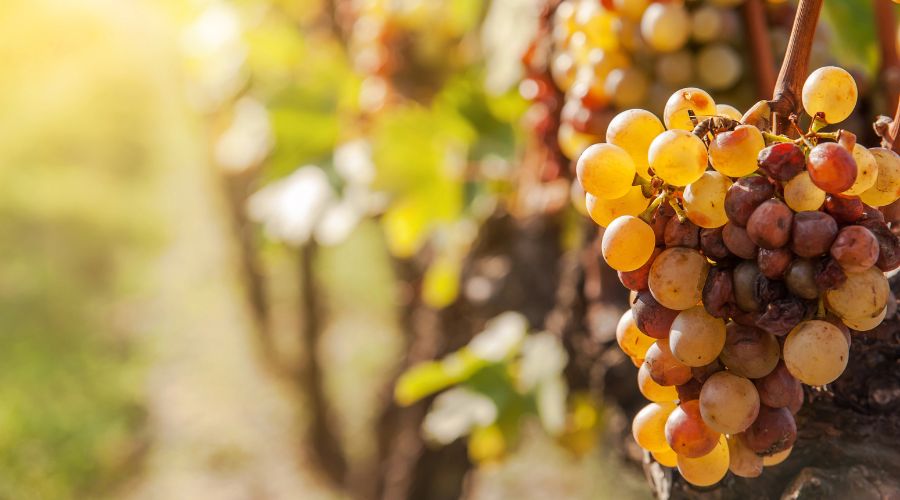Understanding microbial biofungicides
13th August 2025
Microbial biofungicides continue to gain momentum in UK fruit production, but the learning curve for using them effectively can seem rather steep. Lallemand Plant Care’s Bryan Limerick explains more.

For growers who are new to microbial biofungicides or who have tried and had little success in the past, trying again and getting consistently effective results can seem challenging.
Since the first registered biofungicides were introduced many years ago, the number of available products has increased substantially, with significantly improved efficacy and cost-in-use with many biofungicides.
Most registered microbial active ingredients act against plant pathogens via two or more modes of action:
- Competition for space and nutrientsto outcompete pathogens
- Antagonism of pathogens by releasing metabolites to inhibit or disrupt pathogen growth
- Hyperparasitism by actively infecting and feeding on pathogens to weaken them
- To locally or systemically induce the plant’s own defence mechanisms against infection and spread of pathogens.
The most successful IPM programs are those that are proactive rather than reactive.
They usually include:
- Knowledge about the historical and potential pathogens that can affect your fruit production.
- Proper sanitation and crop hygiene to prevent spread of disease from infected plants and contaminated equipment or inputs.
- Control of environmental, physical and chemical factors, where possible, to limit conditions that favour pathogen development, plant stresses, and disease spread.
- Continuous disease monitoring and accurate pathogen diagnoses to identify unexpected issues when they arise.
- Identifying, understanding, and optimising biological and synthetic fungicide tools for cost-effectively preventing or minimising crop diseases.
These components used together disrupt or eliminate environmental, cultural, and biological factors that are essential for pathogens to successfully grow, develop, and cause damage.
Appropriate selection
Properly selected, applied, and timed biofungicide treatments directly exploit pathogens’ biological vulnerabilities. They also support the crops’ physiological health, innate tolerance to plant diseases, and ultimately quality and productivity.
When developing your own effective microbial biofungicide-based IPM strategies, you should consider several important factors:
Be proactive first, then reactive and therapeutic. Biofungicides work best preventively. Focus on effectively protecting non-infected plants by applying before pathogens attack.
Know and understand the potential pathogens that can affect the production of your fruit. This can help you select products that exploit pathogen weaknesses, and decide in advance if and when to apply these products in your program.
Formulation impact on efficacy
Another factor is the way microbial biofungicides are produced and formulated can each have a big impact on their efficacy. Two products with the same active ingredient may yield wildly different results.
That is why you should consider manufacturers with in-house expertise in fermentation and production of their formulations. This helps ensure the quality of the product you are using from batch to batch. Choose the best manufacturers and distributors to add value to your operations.
Choose the proper formulation, application method, and application timings for your target pathogen.
Like synthetic fungicides, they do not persist at effective levels indefinitely. Microbial active ingredients in many soil or growing medium applied products may last from 2–12 weeks, depending on soil, environmental and plant factors, as well as cropping practices.
Foliar biofungicides typically need to be applied frequently since they usually do not spread to new growth, are not systemic, and can be negatively affected by environmental stresses such as UV light, low relative humidity, temperature extremes, and incompatible crop inputs.
Carefully read labels for storage, handling, mixing, application requirements and limits. Since most microbial biofungicides contain living microorganisms and/or metabolites or extracts from their fermentation, they generally cannot tolerate temperature and physical extremes as much as most synthetic fungicides. As such, they have limited shelf-lives under specific storage conditions and particular application requirements or restrictions.
When testing biofungicide products, it is important to identify what the measures of success with the new product should look like before you begin. In some cases, short term visual impact directly on the disease might not be as important as the impact on marketable yield or quality. In fruit production, Botrytis control is a prime example of choosing the right measure of success. While plants may appear free of Botrytis in the field, the fungus can still infect fruit and cause it to rot during storage.
Continued high use of chemical fungicides can also have a direct impact on fruit production. While your number of fruit ‘free of damage from disease’ is up, the overall yield may be impacted more than what you are able to save from pathogens.
Be on the lookout for unexpected results – both positive and negative.
Ideal rotational partners
It is important to remember that it is difficult for pathogens to develop true resistance to biofungicides. This makes them ideal rotational partners for many synthetic fungicides, as they can help prevent or delay fungicide resistance development.
When used alone, they work best against labelled crop diseases at low-to-moderate disease pressures. They are likely to be less effective under high disease pressures, where pathogen levels are high, and/or conditions are suddenly highly favourable for disease development. That is why you should consider using themin combination with compatible synthetic and/or other biological fungicides to manage diseases.
Microbial biofungicides are not miraculous. But using all available information and recommendations should help you build, evaluate and implement your own effective biologically-based IPM programmes using biofungicides.
Read more fruit news.
